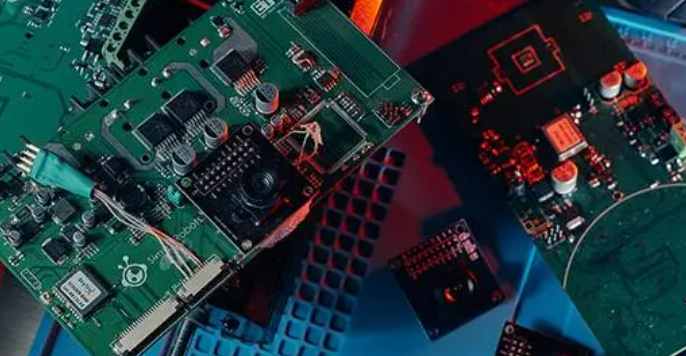
Design for Manufacturing-Oriented Design (DFM) is the core technology of concurrent engineering. Design and manufacturing are the two most important links in the product life cycle. Concurrent engineering is to consider factors such as manufacturability and assemblability of products at the beginning of design. Therefore, DFM is the most important supporting tool in concurrent engineering. The key is the manufacturability analysis of the design information, the manufacturing rationality evaluation and the suggestion of improving the design. In this paper, we will make a brief introduction to the general technical requirements of DFM in PCB process.
First, general requirements
1. This standard, as a general requirement for pcb design, regulates PCB design and manufacturing, and realizes effective communication between CAD and CAM.
2. Our company gives priority to design drawings and documents as the basis for production in document processing.
Two, PCB materials
1. Substrate
PCB substrate generally adopts epoxy glass cloth coated copper plate, that is, FR4. (including single panel)
2. Copper foil
a) more than 99.9% electrolytic copper;
b) Thickness of copper foil on the finished surface of double-layer plate ≥35? m (1OZ); If there is a special requirement, specify it in the drawing or document.
Three, PCB structure, size and tolerance
1. Structure
a) The relevant design elements constituting the PCB shall be described in the design drawing. Appearance should be represented by Mechanical 1 layer (priority) or Keep out layer. If used at the same time in the design document, generally keep out layer for shielding, do not open holes, and use mechanical 1 to represent the forming.
b) Long SLOT holes or hollows can be represented in the design drawing, and corresponding shapes can be drawn with Mechanical 1 layer.
2. Plate thickness tolerance
3. Dimensional tolerance
PCB dimensions shall conform to the design drawing. When the drawing is not specified, the dimensional tolerance is ±0.2mm. (Except V-CUT products)
4. Flatness (warping) tolerance
The flatness of PCB should conform to the design drawing.

Four, printed wire and pad
1. Layout
a) The layout, line width and line distance of printed wire and pad shall be in accordance with the design drawing in principle. However, our company will have the following treatment: compensate the line width and PAD ring width appropriately according to the process requirements. Generally, our company will try to increase PAD for single panel, so as to strengthen the reliability of customer welding.
b) When the spacing of design lines fails to meet the process requirements (too close may affect the performance and manufacturability), our company shall make appropriate adjustments according to the pre-manufacturing design specifications.
c) In principle, our company suggests that when designing single and double panels, the inner diameter of the VIA hole (VIA) should be set at least 0.3mm, the outer diameter should be set at least 0.7mm, the line spacing should be designed at 8mil, and the line width should be designed at least 8mil. To minimize the production cycle, reduce the difficulty of manufacturing.
d) The minimum drilling tool of our company is 0.3, and the finished hole is about 0.15mm. Minimum line spacing is 6mil. The thinnest line width is 6mil. (But the manufacturing cycle is long and the cost is high)
2, wire width tolerance
The width tolerance of the printed conductor is ±15%
3. Grid processing
a) In order to avoid bubbling of copper surface during wave soldering and bending of pcb board due to thermal stress after heating, it is recommended that the large copper surface be laid in the form of grid.
b) Grid spacing ≥10mil(no less than 8mil) and grid line width ≥10mil(no less than 8mil).
4, Thermal pad processing
In a large area of grounding (electricity), often components of the legs connected with it, the treatment of the connecting leg takes into account the electrical performance and process needs, made into a cross welding plate (heat insulation plate), can make in welding due to excessive heat dissipation and the possibility of virtual solder joints greatly reduced.
5. HOLE
1. Definition of metallization (PHT) and nonmetallization (NPTH)
a) By default, our company uses the following methods as nonmetallic holes:
When the customer sets the metallization property of the installation hole in the Advanced properties of Protel99se (plated item is deleted from the Advanced menu), our company defaults to metallization.
When customers directly use keep out layer or mechanical 1 layer arc in the design document to signify punching (no separate holes are placed), our company defaults to nonmetallic holes.
When the customer places the word NPTH near the hole, our company defaults to nonmetalizing the hole.
When the customer explicitly requires the corresponding aperture nonmetalization (NPTH) in the design notice, it shall be processed according to the customer's requirements.
b) Except for the above conditions, component holes, mounting holes, through holes, etc., should be metallized.
2. Aperture size and tolerance
a) PCB component holes and mounting holes in the design drawing are the final finished aperture size by default. The aperture tolerance is generally ±3mil (0.08mm);
b) Through hole (i.e. VIA hole) Our company generally controls: negative tolerance is not required, and positive tolerance is controlled within + 3mil (0.08mm).
3. Thickness
The average thickness of the copper plating layer of the metallized hole is not less than 20? m, at least 18 at the thinnest point, right? m.
4. Roughness of hole wall
PTH hole wall roughness is generally controlled to ≤ 32um
5. PIN hole problem
a) The minimum positioning needle of our CNC milling machine is 0.9mm, and the three positioning PIN holes should be triangular.
b) If the aperture in the design document is less than 0.9mm without special requirements from the customer, our company will add PIN holes in the blank part without line or in the appropriate position on the large copper surface.
6. Design of SLOT hole (slot hole)
a) It is suggested to use Mechanical 1 layer (Keep out layer) to draw its shape for SLOT holes; It can also be indicated by connecting holes, but the connecting holes should be of the same size and the center of the holes should be on the same horizontal line.
b) The smallest slot cutter in our company is 0.65mm.
c) When SLOT holes are used for shielding to avoid creepage between high and low pressure, it is recommended that the diameter should be above 1.2mm for convenient processing.







